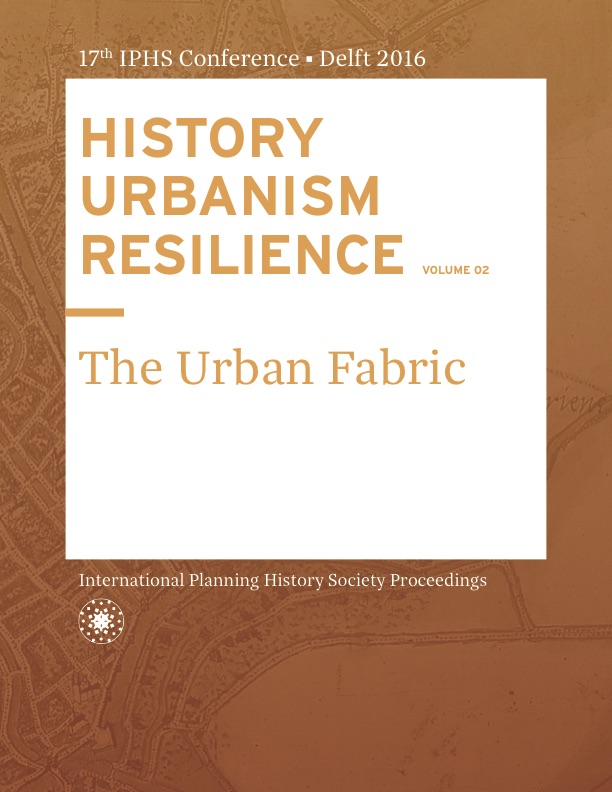A ‘Neighbourhood Renaissance’: Community Development in St. Louis in the 1970s
DOI:
https://doi.org/10.7480/iphs.2016.2.1221Abstract
In 1977, the city of St. Louis was experiencing a ‘Neighbourhood Renaissance’ with greater attention to the neighbourhood, rather than the city or metro area, as the unit of planning and community development projects. Some St. Louis commentators saw this as a local phenomena, inspired by the city’s historically distinct neighbourhoods with strong place-based community groups and neighbourhood improvement associations. Local politicians, like Mayor Jim Conway, also gave particular attention to neighbourhood development as a means to reverse St. Louis’s shrinking population and economy.However this planning approach also reflected in national political shifts. The growing predominance of bottom up, small-scaled planning projects under the Model Cities programs reflected a reaction against the modernist top-down, large-scale redevelopment projects of the 1950s and 1960s. Policies such as the Community Development Act of 1974 provided new opportunities for distributing federal funds for innovative urban revitalization programs including infrastructural improvements for historic preservation districts, and small-scale infill and redevelopment projects in blighted areas.
While the 1970s increased attention to the neighbourhood, it was not the first or last time this scale would be the focus of planning programs. Both in the St. Louis and nationally, neighbourhoods also garnered attention during the Progressive era, and to some extent in the early modernist plans. In St. Louis, interested in neighbourhood planning can be seen both in the proposals for Community Centres in the 1907 plan and the Neighbourhood Units in the 1947 Plan by Harlard Barthothomew.
The distinct conceptions of neighbourhood from three eras of planning from the 1900s, 1940s, and 1970s can be seen when examining the planning proposals for two low-income neighbourhoods in St. Louis, Carr Square and Soulard. By tracing the approach to neighbourhood planning across these three time periods, this paper will start to define the changing meaning of the neighbourhood as a planning unit in national policies. It will also question how these theoretical trends in planning shaped neighbourhood-based planning projects in the specific context of deindustrializing St. Louis.
References
Andrew Hurley, Beyond Preservation: Using Public History to Revitalize Inner Cities. (Philadelphia: Temple University Press, 2010), 12.
Calloway, Ernst. “The Promise of Jim Conway: Neighbourhood renaissance could be in store for St. Louis.” St. Louis Post Dispatch, April 25, 1977. Republished in Ernst Calloway, St. Louis: its Political Arithmetic and Voting Behaviour, 1970-79. St. Louis: Center for Urban programs, St. Louis University, Aug. 1, 1979. P. 37.
Clarence N. Stone and Robert Stoker, eds, Urban Neighbourhoods in a New Era: Revitalization Politics in the Postmodern City (Chicago: University of Chicago Press, 2015) 6-9, 20.
Cowan, Susanne “In Transition: Racial Integration and Community Organizing in a St. Louis Neighbourhood in Decline.” Society of American Regional Planning History (SACRPH), November 5, Los Angeles, 2015.
Cowan, Susanne. “Whose Neighbourhood?: Identity Politics, Community Organizing, and Historic Preservation in St. Louis.” In Whose Tradition. Eds. Nezar AlSayyad, et al. (London: Routledge, Forthcoming in 2016).
Harleman, Kathleen M. The Neighbourhood: A History of Skinker-DeBaliviere. St. Louis: Skinker-DeBaliviere Community Council, 1973. P. 41.
Logan, J. R. and Molotch, H. L., Urban Fortunes: The Political Economy of Place. Berkeley, CA: University of California Press, 1987.
Looker, Benjamin. A Nation of Neighbourhoods: Imagining Cities, Communities and Democracy in Postwar America. (Chicago: University of Chicago Press. 2015), 233-4.
Spitzer, Dana L. “City wants to Lure More Middle Class,” Post Dispatch. August 3, 1975. At Missouri History Museum Library and Research Center A1553 Folder 3, “News clippings Regarding Crime.”
Toft, Carolyn Hewes. St. Louis Landmarks and Historic Districts. (St. Louis, MO: Landmarks Association of St. Louis, Inc, 1988).
Toft, Carolyn Hewes. Soulard: The Ethnic Heritage of an Urban Neighbourhood. Saint Louis, Mo.: Social Science Institute, Washington University, 1975.
Ursery, Durwin Gerald. The Skinker DeBaliviere Community of St. Louis. St. Louis: Washington University, 1973.
Wayman, Normal L. History of St. Louis Neighbourhoods. St. Louis: St. Louis Community development Agency, 1978.

